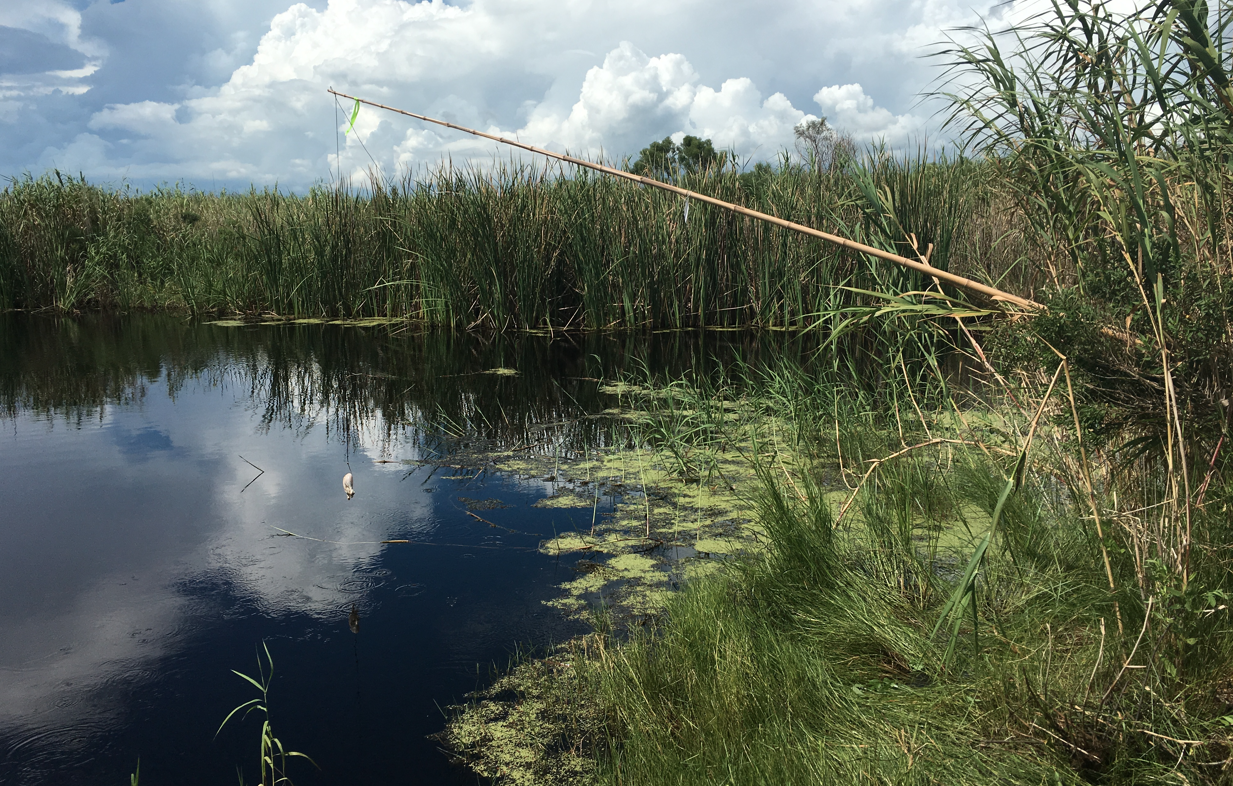Methods for Alligator Hunting
Several methods exists for hunting and harvesting American alligator. Each method has its advantages and disadvantages. Although these alligator hunting methods are effective ways to tag an alligator, always keep safety in mind when hunting. An element of danger is involved when hunting—and alligator hunting is no different.
The techniques, equipment and practices described below provide practical techniques for hunting wild alligator. Some of the described alligator hunting methods may be prohibited in your area or during your hunt. Become familiar with the alligator hunting regulations prior to your hunt.

Legal Alligator Hunting Methods
Legal methods for alligator hunting vary from state to state. As mentioned, become familiar with legal methods of take for your state first. Some states allow hunting at night; some don’t. Alligator hunting often takes place after dark where legal, when alligators are most active.
Hunters can locate alligators at night by their reflective eyeshine. Alligator eyes give off a red glow. Approach alligators quietly, keeping the beam of the spotlight directly on or just above their eyes. Once you get within range of an alligator, there are many ways to capture the animal for take.
Alligator Hunting Methods: Snares
Snares work well for catching alligators. Wire snares are attached to a restraining line that is loosely mounted (using a small rubber band or piece of tape) to the end of a pole are most commonly used. Sometimes, snares are used to secure an alligator once it has been harpooned or snagged and brought under control near the boat.
Snares also work as an initial capture technique. Snares must be hand-held or attached to a hand-held device and cannot be left unattended. From my experience, snares work better as an initial capture methods when used on smaller alligators. Large gators rarely fall for snares during daylight hours.
Alligator Hunting Methods: Harpoons and Gigs
Harpoons or gigs may be used for attaching a restraining line to an alligator. Harpoons or gigs consist of a penetrating point such as a straightened fish hook, detachable dart, fish gig or spear point that is attached to a restraining line. The harpoon point is typically mounted on a pole, arrow shaft or spear and is thrown.
A gig (a pronged instrument with a metal or wooden pole) is jabbed directly into an alligator. Gigs work better on smaller alligators. Harpoons work better on larger alligators.
Alligator Hunting Methods: Snatch Hooks
Another alligator hunting method is the snatch hook. A snatch hook is a weighted treble hook that is attached to a restraining line. A snatch hook is used attach a restraining line to an alligator. The hook is either hand-held or used in conjunction with a long, stout fishing rod and reel and heavy line.
First, the hook is cast over the alligator or over the area where it last submerged. Next, the hook is then retrieved until it makes contact with the alligator, at which point it is set with a strong pull. Finally, the line is kept tight until the animal tires. The hook often falls out of the alligator if the line is allowed to go slack.
Alligator Hunting Methods: Baited Hook
This method is essentially fishing for alligators. This is probably the most used of all alligator hunting methods. Though hooks are set during the day, they are intended to capture alligators overnight. However, baited hooks do catch alligators during daylight hours.
Baited hooks are an easy and passive method for catching alligators. This involves suspending a baited hook above the water and then checking the line each day. Sets are typically created with an anchor, a long cane pole, rope, a leader, a rubber band, and a large hook. The best bait is 2-3 day-old chicken leg quarters.
Alligator Hunting Methods: Bangsticks
Bangsticks are common alligator hunting equipment and are a safe and effective tools for humanely killing alligators. Bangsticks or power heads, typically used by divers to kill fish, discharge a firearm cartridge upon contact. For a humane kill, the shot should be centered immediately behind the skull cap and angled toward the brain.
It is recommended that the bangstick be used in compliance with the manufacturer’s safety recommendations. When killing an alligator, the bangstick should be discharged below the waterline to reduce the potential for aerial dispersal of bullet and bone fragments. Keep in mind that to legally dispatch an alligator using a bangstick, the animal must be attached to a restraining line using methods such as those previously described.
Hunting Method: Guns
The previous methods include capturing an alligator on line and then dispatching it with either a bangstick or a gun. Although this is commonly how alligators are hunted and harvested, some states, such as Florida, allow free-swimming alligators to be harvested on private lands. Although most firearms are capable of dispatching alligators, they are all dependent upon the skill of the user.
Summary of Methods
In closing, several alligator hunting methods can be used by hunters for effective take of animals. Alligator hunting is dangerous. Not only because of the alligators, but because of the inherent hazards boats, hooks, knives, guns, and slippery boat decks. Use caution and stay aware of yourself and others while hunting.
Some alligator hunters are bitten annually and some seriously injured. More hunters are hurt because of falls and punctures due to alligator hunting methods and equipment. Use extreme caution when handling alligators, but just be careful in general. Also, know the alligator hunting regulations in your area prior to your hunt.
